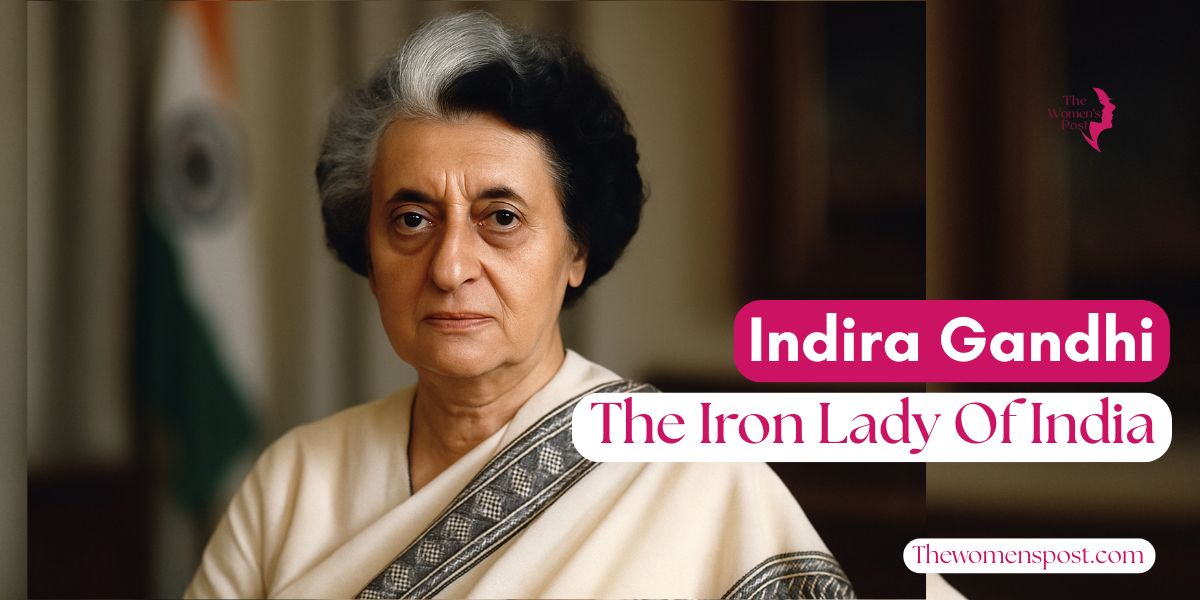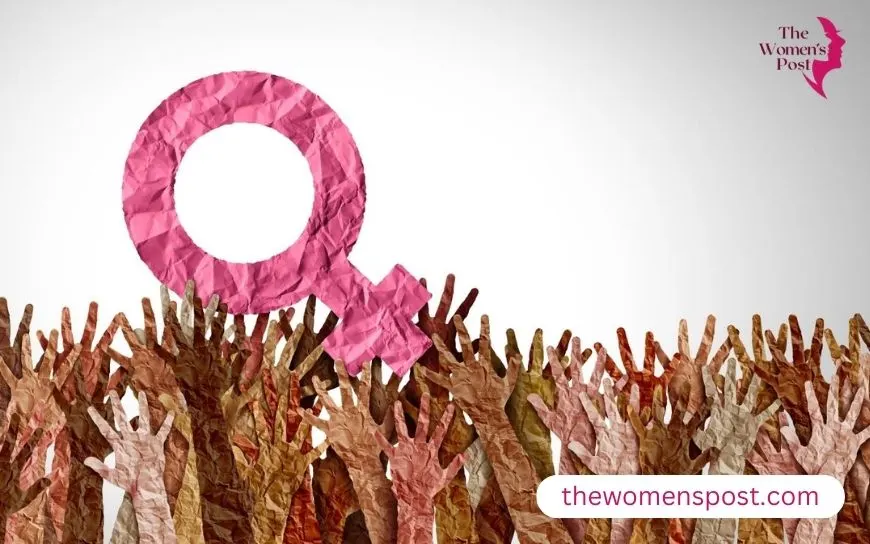Indira Gandhi: India’s First Female Prime Minister

Introduction to Indira Gandhi’s Legacy
Remarkable leader Indira Gandhi made a long-lasting impression on India. She led the nation through some of its most difficult and transforming years as the first woman to be Prime Minister. India’s first female prime minister, Indira Gandhi, and her political path are a tale of resiliency molded by her family’s great participation in India’s struggle for freedom, her worldwide education, and her audacious political moves. Although Indira Gandhi is praised for her tenacity and accomplishments, some of her actions—including the Emergency and Operation Blue Star—remain divisive. From her early years to her sad death, this biography investigates her life and addresses often asked questions about her legacy, so stressing the Nehru family legacy and her influence on women in Indian politics.
Early Childhood and Family History
Birthplace and Family Background
Born November 19, 1917, in Allahabad, now Prayagraj, Uttar Pradesh, India, Indira Priyadarshini Gandhi was She was the only child of Jawahralal Nehru, the first Prime Minister of India and a major player in the country’s independence movement, and Kamla Nehru, another freedom fighter. Indira Gandhi grew up in a politically active family and was surrounded with future conversations about India. Renowned lawyer and Congress leader Motilal Nehru, her grandfather established the Nehru family as among the most powerful in India. Deeply ingrained in the ideas of freedom and nation-building, the Nehru family legacy gave Indira Gandhi a special stage from which to enter politics.
Also Read: Tori Dunlap: Supporting Women in Reach of Financial Freedom
Early Involvement in the Freedom Movement
Indira Gandhi participated in the freedom movement from early years. She began the “Bal Charkha Sangh” as a young child to assist Mahatma Gandhi’s call for self-reliance and later founded the “Vanar Sena,” a children’s group serving the Congress party during the Non-Cooperation Movement. Her early political exposure helped to shape her great sense of obligation toward India.
Education of Indira Gandhi
Global Academic Journey
Indira Gandhi studied at some of the top institutions in India and abroad, so acquiring a world-class education. She discovered many cultures at Ecole Nouvelle in Switzerland and Ecole Internationale in Geneva. She attended Pupils’ Own School in Poona (now Pune) and Bombay (now Mumbai) in India. She also spent time stressing Indian culture and creativity at Vishwa Bharati University in Shantiniketan, established by Rabindranath Tagore.
Studies at Oxford and Academic Recognition
Indira Gandhi subsequently attended Somerville College, Oxford, where she studied history, then Badminton School in Bristol, England. Her time at Oxford expanded her viewpoint even though she did not finish her degree there. She was given honorary doctorates from several colleges all around over the years and a Citation of Distinction from Columbia University for her contributions. Her perspective was greatly shaped by her education, which also helped to define the most potent female leader of India.
Also Read: Nadya Okamoto: A Warrior Against Period Poverty
Political Career of Indira Gandhi
Entry into Indian Politics
Beginning in 1938 when Indira Gandhi, the first female Prime Minister of India, joined the Indian National Congress at age 21, started her political path. She participated actively in the freedom fight and spent 1942 behind the Quit India Movement under imprisonment. Indira Gandhi was the personal assistant to her father following India’s 1947 freedom, learning the nuances of government.
Rise to Leadership
An important turning point came when Indira Gandhi took over the Congress party in 1959. Following the death of her father in 1964, she joined the cabinet of Prime Minister Lal Bahadur Shastri as Minister of Information and Broadcasting. At age 48, Indira Gandhi was selected as Prime Minister after Shastri passed unexpectedly in 1966, so pioneering women in Indian politics. Her ascent to prominence addressed the question, “What made Indira Gandhi India’s most powerful woman leader?”—her will to negotiate challenging political terrain with tenacity.
First Term (1966–1977)
Major Achievements
Indira Gandhi had notable success during his first term. Bangladesh’s founding following India’s triumph in the war against Pakistan helped to increase her profile. Her landslide victory in the 1971 elections confirmed her leadership quality. She also instituted programs aimed at helping the underprivileged, including agricultural reforms and bank nationalization, which brought her the moniker “Iron Lady,” or Vedantu. These laws highlighted the Nehru family’s tradition of giving social welfare top priority.
Also Read: Lucy Guo: The Youngest Self-Made Female Billionaire
The Emergency Period
Her leadership, though, was under fire. Indira Gandhi declared a state of emergency in 1975 in response to mounting political upheaval and legal challenge to her election. Thousands were arrested, the press was under censure, and civil liberties were suspended. Though some contend it was necessary to preserve order, many view the Emergency (1975–77) as a low point in Indian democracy.
Out of Power and Return (1977–1980)
Indira Gandhi lost the general elections in 1977; the Janata Party then emerged. She still kept political active, though, and won public support. She once more won the elections in 1980 and went back as Prime Minister, so confirming her place in women’s politics.
Second Term (1980–1984)
Challenges and Decisions
Her second term proved to be demanding. Tensions between regions and economic problems tried her leadership. Indira Gandhi commanded Operation Blue Star, a military operation aimed at eradicating Sikh militants from the Golden Temple in Amritsar, in 1984. Though the temple is a holy site, the operation failed and infuriated Sikhs widely. Tragic results came of this choice. Notwithstanding these obstacles, Indira Gandhi’s capacity for difficult decisions helped to define the most potent female leader of India.
Also Read: Daniella Pierson: Building a Media Empire and Breaking Barriers
Personal Life of Indira Gandhi
Marriage and Family
Indira Gandhi wed Feroze Gandhi, a Parsi journalist and Congress member not connected to Mahatma Gandhi in 1942. Two sons of theirs were Sanjay and Rajiv. Their marriage suffered, and they lived apart for much of their lifetime. 1960 saw Feroze die. Though Sanjay participated in politics, he passed away in an aircraft accident in 1980. Later on, Rajiv became Prime Minister following the death of Indira, carrying on the Nehru family legacy.
Influence of Jawaharlal Nehru
Close ties to her father, Jawaharlal Nehru, helped Indira Gandhi develop her political perspective. She talked of his impact on her dedication to India’s development quite a bit.
Assassination and Legacy
Tragic End
Two of Indira Gandhi’s Sikh body guards, Satwant Singh and Beant Singh, killed her in New Delhi on October 31, 1984. Killing was in response to Operation Blue Star. She sixty-six years old. Her death set off anti-Sikh riots around India that claimed thousands of lives and left a terrible legacy still felt today.
Also Read: Brittany Wenger: Scientist Saving Lives and Tech Entrepreneur
Lasting Impact
Legacy of Indira Gandhi is multifarious. She is honored for her support of the underprivileged and help of India’s global posture. India Today crowned her the best Prime Minister in 2001; the BBC dubbed her “Woman of the Millennium” (Vedantu) in 1999. Still debatable, though, the Emergency and Operation Blue Star drew criticism for displaying authoritarian impulses. Her leadership as a woman in Indian politics answered the question, “What made Indira Gandhi India’s most powerful woman leader?” by combining bravery, strategic vision, and resiliency, so opening the path for next generations.
Her family shapes Indian politics still today. Prominent Congress leaders carrying forward the Nehru family legacy have been her son Rajiv Gandhi, grandson Rahul Gandhi, and daughter-in-law Sonia Gandhi. The political path of Indira Gandhi, the first female Prime Minister of India, is evidence of the possibilities and difficulties of leadership in a country with great diversity.
Conclusion
Indira Gandhi led a life combining bravery, controversy, and dedication. Her narrative keeps inspiring discussions on democracy, leadership, and the place of women in Indian politics, so strengthening the Nehru family legacy.
Key Achievements and Contributions of Indira Gandhi
- First Female Prime Minister (1966): Breaking gender stereotypes for women in Indian politics, 1966 saw the first female prime minister for India.
- Bangladesh Liberation War (1971): Bangladesh Liberation War 1971 brought India triumph against Pakistan, so securing Bangladesh’s independence.
- Bank Nationalization (1969): Nationalized fourteen significant banks to assist in rural and economic development.
- Emergency Declaration (1975): Declared a state of emergency in 1975, the divisive action taken to handle political instability.
- Operation Blue Star (1984): Under ordered military action at the Golden Temple, there was major controversy.
Also Read: Marley Dias: Young Literary and Activist Trailblazer
FAQ’s
1. Where was Indira Gandhi born, and from what background?
November 19, 1917 saw Indira Gandhi born in Allahabad, now Prayagraj, India. Her father, Jawahralal Nehru, the first Prime Minister of India, was a major component of the Nehru family legacy and she belonged to a well-known political family from Uttar Pradesh.
2. Indira Gandhi’s education was what?
She attended eminent universities including Somerville College, Oxford, Ecole Nouvelle in Switzerland, Ecole Internationale in Geneva, and Vishwa Bharati in Shantiniketan. Her honorary degrees from several colleges also help to explain her leadership among women in Indian politics.
3. Indira Gandhi became Prime Minister in what manner?
India’s first female Prime Minister, Indira Gandhi’s political path brought her to be Prime Minister in 1966 following Lal Bahadur Shastri’s death. Her background in the Congress party and her position in Shastri’s cabinet qualified her as a top contender.
4. Why had Indira Gandhi been killed?
Retaliation for Operation Blue Star, a military operation at the Golden Temple that infuriated many Sikhs, she was killed on October 31, 1984, by her Sikh bodyguards.
5. Indira Gandhi’s legacy is what?
She is regarded as a trailblazer for women in Indian politics, a leader during the 1971 Bangladesh war, and a poverty advocate with policies. Still divisive, the Emergency and Operation Blue Star’s impact addresses what made Indira Gandhi India’s most influential woman leader most powerful.









